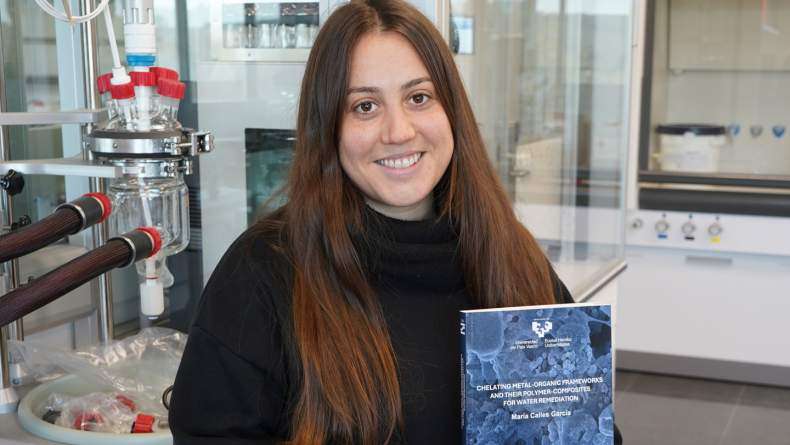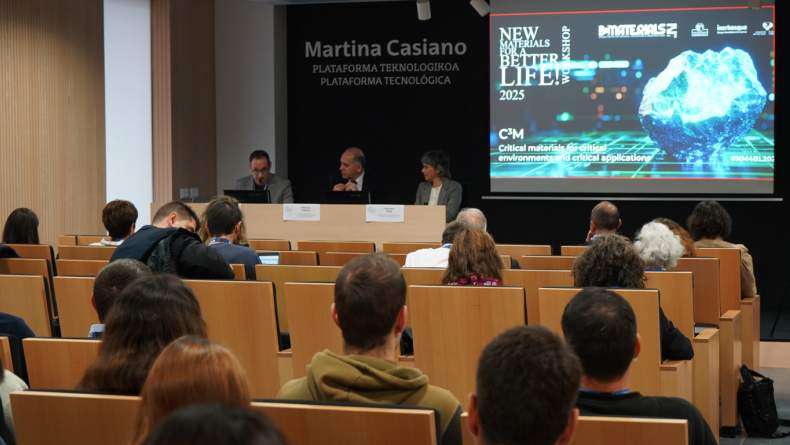Emergent Piezoelectric Materials: structure, properties, applications

Emergent Piezoelectric Materials: structure, properties, applications A. Kholkin and S. Kopyl 1Physics Department and CICECO – Aveiro Institute of Materials, University of Aveiro, Campus de Santiago, 3810-193 Aveiro, Portugal
Emails: kholkin@ua.pt, svitlanakopyl@ua.pt
Recent studies revealed several new classes of piezoelectrics including 2D materials (graphene) [1] and biomolecular crystals (self-assembled peptides, amino acids, nucleotides) [2-4]. Piezoelectricity in these occurs because of symmetry breaking on the surface in the first case and presence of highly anisotropic hydrogen bonds in the second. Graphene in contact with oxides offers extremely high piezoelectric activity due to polarity of C-O bonds, while peptide nanotubes (PNTs) demonstrate remarkable electromechanical properties (similar to ZnO or LiNbO3) due to molecular self-assembly and intrinsic softness of directed hydrogen bonds formed in these materials. Remarkably stable structure, possibility of functionalization together with biocompatibility and easy synthesis and nanofabrication, make graphene, PNTs and other biomolecular crystals (e.g. amino acid glycine [3,4]) attractive alternatives to traditional lead-based piezoelectrics. In this presentation, the mechanisms of piezoelectric effect in these structures will be discussed and methods for their studies will be introduced. Novel method of Hybrid Piezoresponse Force Microscopy (Hybrid-PFM) will be presented allowing measuring piezoelectric properties in nanomaterials during the acquisition of force-distance curves [5]. The seminar will then discuss the results of our recent studies on the growth and characterization of PNTs as well as on the fabrication of large and stable peptide microtubes (PMTs) allowing their use in microdevices. The mechanisms of strong piezoelectricity, pyroelectricity and dielectric relaxation in PNTs and PMTs will be proposed. Low temperature phase transitions observed in these materials will be discussed in detail. Several anomalies found in the temperature range 100-350 K will be attested to the crucial role of nanoconfined water in the internal cavities of PNTs. Recent results on piezoelectricity and pyroelectricity in PNTs show that they are very attractive for various applications in biomedicine, because of their intrinsic biocompatibility combined with mesoporous structure and ability to work in direct contact with living cells and biological liquids. Scaling of piezomaterials down to nanosize is expected to dramatically improve their performance, thus making piezoelectric nanodevices much more sensitive than the traditional ones. The examples of these applications will be presented.
References [1] G. da Cunha et al. Nat. Commun. 6, 7572 (2015). [2] A. L. Kholkin et al. ACS Nano 4, 610 (2010). [3] S. Guerin et al. Nature Mater. 17, 180 (2018). [4] E. Seyedhosseini et al. ACS Appl. Mat. Interfaces 9, 20029 (1917). [5] A. Kalinin et al. Ultramicroscopy 185, 249 (2018).
BIO Dr. Andrei Kholkin received his BSc and MSc degrees in Physics from the St. Petersburg State University and PhD degree from the A. F. Ioffe Physical-Technical Institute, Russia. In the consequent years, he held research positions in IFW (Dresden, Germany), EPFL (Lausanne, Switzerland) and Rutgers University (USA). He is currently research coordinator and head of the laboratory of advanced microscopy of nanomaterials in the University of Aveiro (Portugal). His laboratory develops multifunctional materials (mainly piezoelectrics, ferroelectrics and multiferroics) and scanning probe microscopy techniques for their study. He is a coauthor of more than 500 technical papers in this area including numerous reviews and book chapters. He is a member of the Ferroelectric Committee of IEEE and was a recipient of the “Excellency” award from the Portuguese Foundation for Science and Technology and of the Ferroelectrics Recognition award from IEEE. Dr. Kholkin is a Fellow of IEEE (class 2012), and member of IEEE, Materials Research Society and Portuguese Materials Society.
Dr. Andrei Kholkin received his BSc and MSc degrees in Physics from the St. Petersburg State University and PhD degree from the A. F. Ioffe Physical-Technical Institute, Russia. In the consequent years, he held research positions in IFW (Dresden, Germany), EPFL (Lausanne, Switzerland) and Rutgers University (USA). He is currently research coordinator and head of the laboratory of advanced microscopy of nanomaterials in the University of Aveiro (Portugal). His laboratory develops multifunctional materials (mainly piezoelectrics, ferroelectrics and multiferroics) and scanning probe microscopy techniques for their study. He is a coauthor of more than 500 technical papers in this area including numerous reviews and book chapters. He is a member of the Ferroelectric Committee of IEEE and was a recipient of the “Excellency” award from the Portuguese Foundation for Science and Technology and of the Ferroelectrics Recognition award from IEEE. Dr. Kholkin is a Fellow of IEEE (class 2012), and member of IEEE, Materials Research Society and Portuguese Materials Society.
 Dr. Svitlana Kopyl has received her PhD degree in Physical Chemistry from the Vernadskiy Institute of General and Inorganic Chemistry of the Ukrainian Academy of Sciences (Kyiv, Ukraine). In the past, she worked at Research Foundation of the City University of New York (USA), Instituto Nacional del Carbón (Spain) and at Institute of Biomaterials and Bioengineering of the Tokyo Medical and Dental University (Japan). She is currently a researcher in CICECO - Aveiro Institute of Materials of the University of Aveiro (Portugal). Her research interests are related to the investigation of ferroelectric biomaterials and energy harvesting systems. She has published more than 40 scientific articles and presented the results at many international conferences.
Dr. Svitlana Kopyl has received her PhD degree in Physical Chemistry from the Vernadskiy Institute of General and Inorganic Chemistry of the Ukrainian Academy of Sciences (Kyiv, Ukraine). In the past, she worked at Research Foundation of the City University of New York (USA), Instituto Nacional del Carbón (Spain) and at Institute of Biomaterials and Bioengineering of the Tokyo Medical and Dental University (Japan). She is currently a researcher in CICECO - Aveiro Institute of Materials of the University of Aveiro (Portugal). Her research interests are related to the investigation of ferroelectric biomaterials and energy harvesting systems. She has published more than 40 scientific articles and presented the results at many international conferences.Related news
María Calles, New Doctor of BCMaterials
We would like to congratulate María Calles García for obtaining her PhDs in Materials Science and Technology from the UPV/EHU. On December 4 made a brilliant defense of her thesis titled ‘Chelating…Invited Talk with Barcelona Microelectronics Institute’s researchers (December 3)
On December 3 at 12:00 PM, in the Martina Casiano Auditorium in Leioa, BCMaterials will host senior researchers Antón Guimerà and Xavier Illa from the Barcelona Microelectronics Institute (IMB-CNM,…Invited Talk by Liu Yao on Lithium-Metal Batteries (December 2)
Next Monday, December 2, Liu Yao, professor at the Shanghai Institute of Applied Physics, will give an invited lecture at BCMaterials entitled ‘Li-Metal Batteries: From Liquid to Solid-State’. The…Success of BCMaterials’ Annual Workshop on Critical Materials
The 2025 edition of BCMaterials’ annual workshop gathered nearly one hundred participants on November 19 in Leioa to review the latest advances and discuss critical materials, their applications, and…



